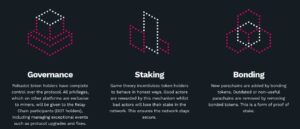The central banks of four countries, namely Australia, Singapore, Malaysia, and South Africa, have announced that they will jointly test and develop a shared platform to enable cross-border digital currency transactions, mainly CBDCs.
The four banks mentioned above will look at building several prototypes of shared platforms that will utilize multiple CBDCs. Several countries and their central banks are exploring Central Bank Digital Currencies (CBDCs) and how they can be utilized in the existing financial system.
The Goal Behind The Trial
The trial announced by the central banks of these countries will conduct a trial of cross-border payments that will use different CBDCs. The trial’s goal will be to ascertain if CBDCs can reduce the cost of cross-border transactions. The central banks issued a joint statement announcing their intention of creating prototypes of shared platforms.
Cutting Out The Middleman
The central banks of Malaysia (Bank Negara Malaysia), Singapore (The Monetary Authority of Singapore, Australia (Reserve Bank of Australia), and South Africa (South African Reserve Bank) will work with the Bank For International Settlements (BIS) innovation hub, which is based in Singapore. The banks will explore how financial institutions can conduct transactions with each other directly using CBDCs issued by the respective central banks of each country.
This would effectively cut out third parties whose services are used to process cross-border transactions, helping to cut costs and reduce the time taken to process these transactions.
A Major Advocate For CBDCs
The Bank for International Settlements is a strong advocate of CBDCs, believing that they could vastly improve the efficiency of cross-border payments between countries that would collaborate and test the prototype platforms. Efficiency could be improved by supporting the use of common standards and also establishing international payment systems.
BIS has conducted its own surveys and research, stating that 86% of central banks explored CBDCs and their potential use cases. A further 60% were already experimenting and trying out the technology, while 14% were using CBDCs in pilot projects. According to BIS, CBDCs can be used to pay shops and businesses and can also be used to settle trades between institutions in financial markets.
Testing Different Distributed Ledger Platforms
The four central banks will jointly develop technical prototypes on several different distributed ledger technology platforms. They would also jointly assess the operating frameworks, allowing the central banks to share the CBDC infrastructure across various jurisdictions. The banks plan to publish their findings early next year and look to share prototypes of the shared platforms.
Creating A More Efficient Settlement Platform
The assistant governor of Bank Negara of Malaysia, Fraziali Ismail, said that he believes a shared platform of multiple CBDCs could potentially serve to disrupt current legacy payment methods and create a foundation for a more efficient platform for international payments.
Fraziali Ismail commented,
“We hope the project will spur greater public-private collaboration to enable fast and frictionless cross-border payments, combining both the benefits of distributed ledger technology and the efficiency of a common platform.”
Disclaimer: This article is provided for informational purposes only. It is not offered or intended to be used as legal, tax, investment, financial, or other advice.




















